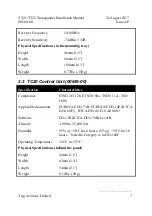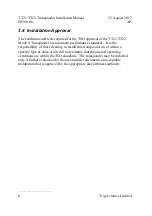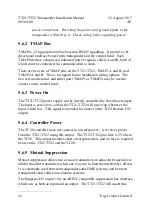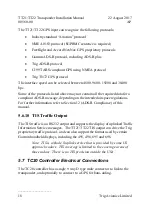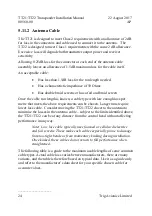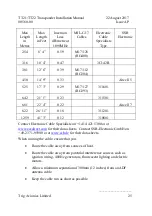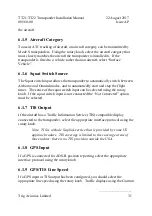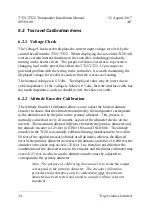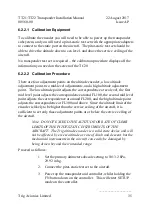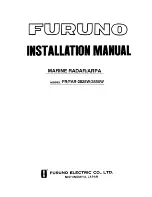
TT21/TT22 Transponder Installation Manual
22 August 2017
00560-00
Issue AP
______________________
Trig Avionics Limited
21
tools available on the market that will reliably crimp them to the wiring.
Because the contacts are a MIL standard, there is also a MIL standard for the
crimp tool, although other proprietary solutions are also available.
The MIL reference for the basic style of hand tool is M22520/2-01. This style
of tool can crimp many different contact types, and relies on interchangeable
"positioners" to hold the actual contact in use. The MIL reference for the
positioner that you need for the crimps we supply is M22520/2-08.
Any tool that complies with these references can be used to crimp these
contacts. One of the most popular vendors of these small hand tools is Daniels
Manufacturing Corporation (see www.dmctools.com). Their AFM8 hand tool
complies with M22520/2-01, and their K13-1 positioner is M22520/2-08
compliant, so the combination will crimp the supplied connectors.
Once crimped, the contacts should be slotted into the rear of the connector
shell. Push the contact in until the retaining tab clicks into place. Tug gently
to confirm the contact is locked in place.
5.10 Wiring Considerations
The connection from the TT21/TT22 transponder to the TC20 uses a minimum
of six (6) signal lines; the TMAP pair, the Power and Ground pair, and the
Remote On discrete line plus associated ground line. In a certified installation
the normal wire choice would be Tefzel hook-up wire. Wire of 20 AWG is
more than adequate for the task; in installations where weight is an issue, wire
of 22 or 24 AWG can also be used. Where lighter wires than 20 AWG are
used the individual wires should be laced together for support.
The TT21/TT22/TC20 was tested and certified using unshielded, untwisted
wiring, and that is sufficient for a certified installation. There may however be
technical benefits of improved electromagnetic emissions and susceptibility to
and from the transponder system if the two wires of the TMAP pair are lightly
twisted together – one twist per 1 to 2 inches is appropriate. This may reduce
interference and break-through on adjacent audio wiring if it is not possible to
route them separately. For tidiness and consistency the other pairs in the
bundle can also be twisted, but there will be no particular difference in
behaviour.

